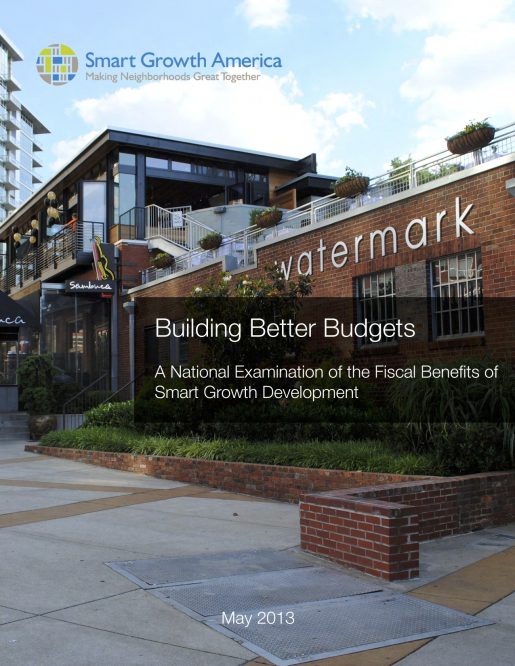Building Better Budgets
Local governments across the country have compared development strategies to understand their impact on municipal finances. These studies generally compare two or more different development scenarios, and help local leaders make informed decisions about new development based on the costs or revenues associated with them.
Many municipalities have found that a smart growth approach would improve their financial bottom line. Whether by saving money on upfront infrastructure; reducing the cost of ongoing services like fire, police and ambulance; or by generating greater tax revenues in years to come, community after community has found that smart growth development would benefit their overall financial health. Many of these findings have been made publicly available.
No national survey has examined these savings as a whole until now. This report is the first to aggregate those comparisons and determine a national average of how much other communities can expect to save by using smart growth strategies.
Building Better Budgets: A National Examination of the Fiscal Benefits of Smart Growth Development surveys 17 studies that compare different development scenarios, including a brand-new study of Nashville-Davidson County, TN, commissioned specifically for this report.
The report looks at the costs associated with smart growth development and conventional suburban development, as well as both strategies’ revenue potential. When compared to one another, we find:
Smart growth development costs one-third less for upfront infrastructure.
Our survey concluded that smart growth development saves an average of 38 percent on upfront costs for new construction of roads, sewers, water lines and other infrastructure. Many studies have concluded that this number is as high as 50 percent.
Smart growth development saves an average of 10 percent on ongoing delivery of services.
Our survey concluded that smart growth development saves municipalities an average of 10 percent on police, ambulance and fire service costs.
Smart growth development generates 10 times more tax revenue per acre than conventional suburban development.
Our survey concluded that, on an average per-acre basis, smart growth development produces 10 times more tax revenue than conventional suburban development.
An opportunity for municipal leaders
Local leaders everywhere can use this information to make better fiscal decisions about development in their region.
The evidence presented in this report suggests improved strategies for land use and development can help local governments maintain and improve their fiscal solvency. As this report shows, smart growth development can reduce costs and in many cases increase tax revenue. This combination means that in some cases smart growth development can generate more revenue than it costs to operate.
These findings are true for any rural, suburban or urban community, anywhere in the country. Local governments throughout the United States are already facing unprecedented challenges in providing high-quality infrastructure and adequate public services to their residents on a tight budget. Choosing financially responsible development patterns can help communities across the country protect their fiscal health for generations to come.
